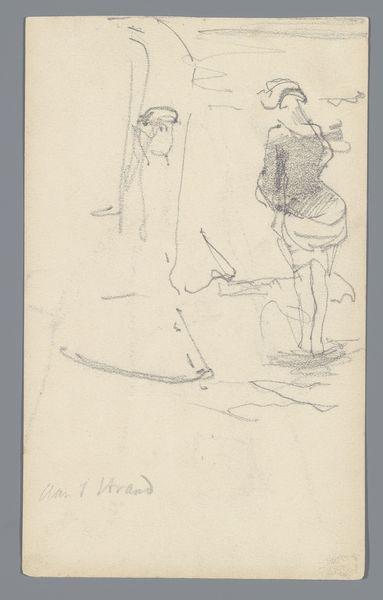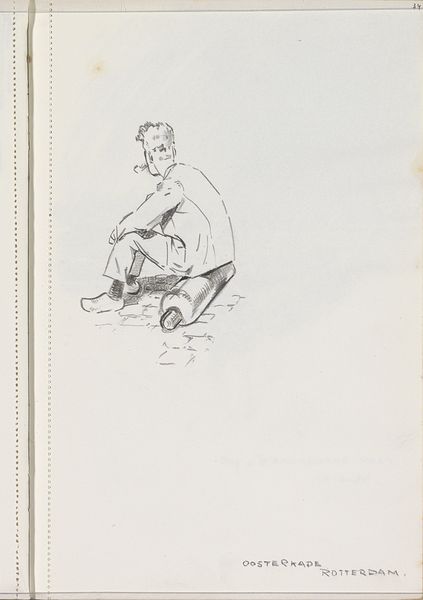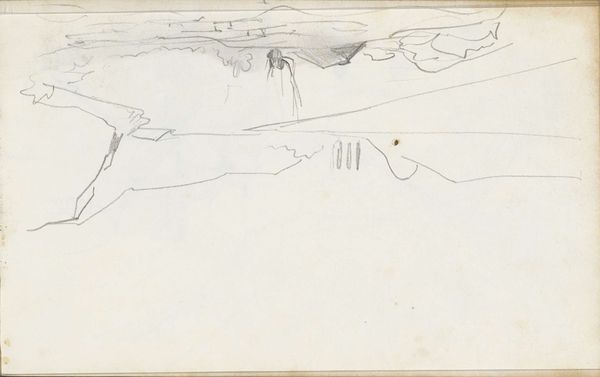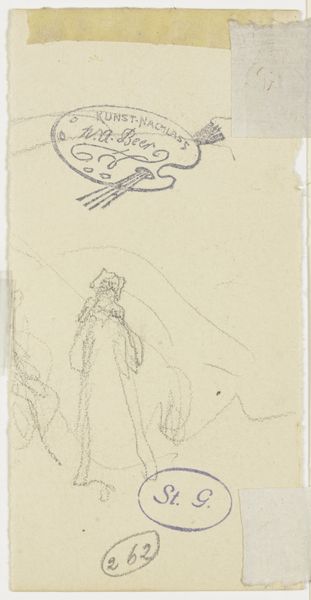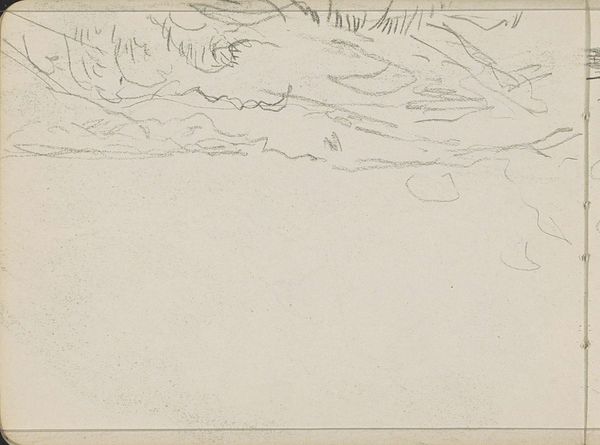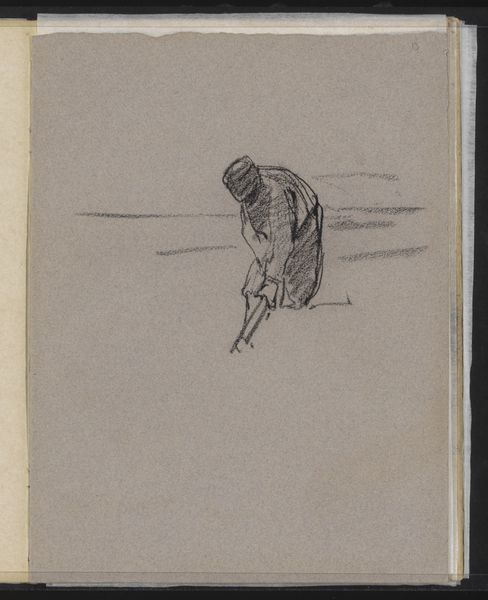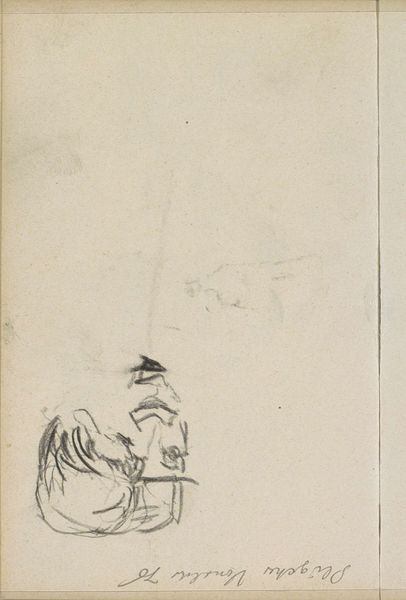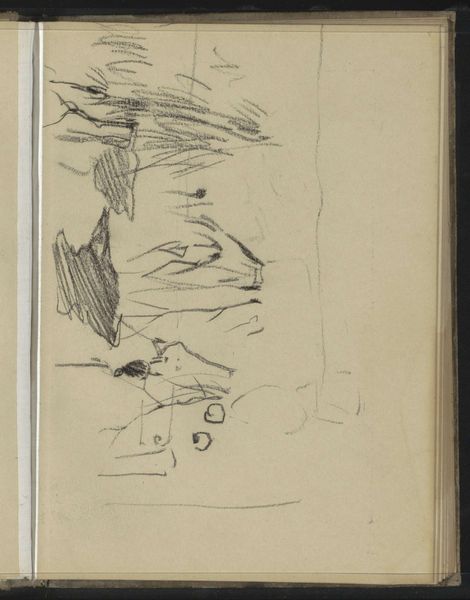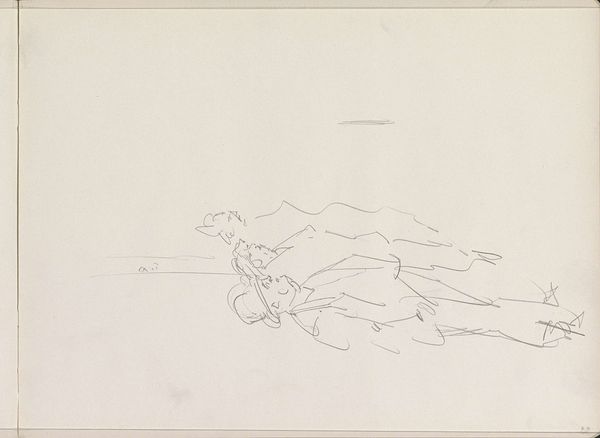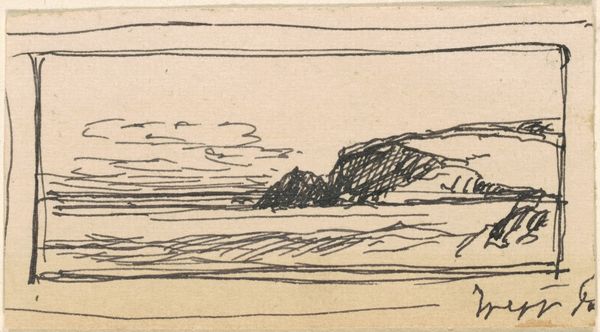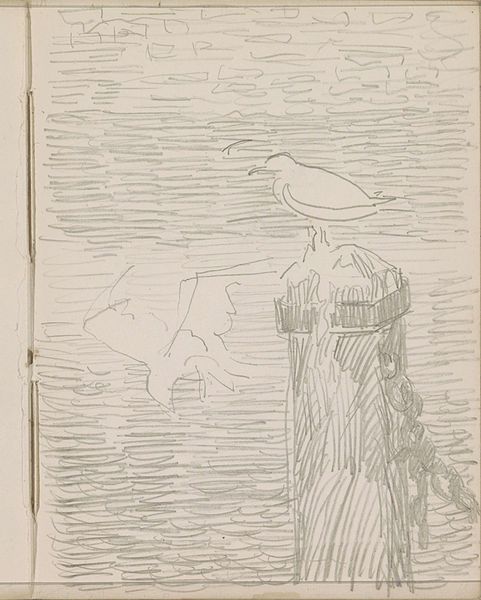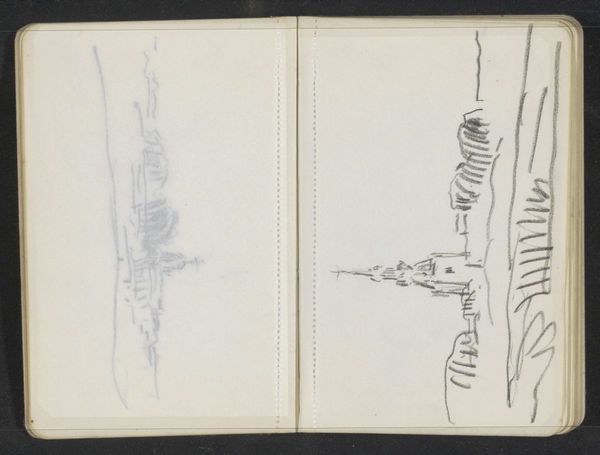
drawing, paper, pencil
#
drawing
#
quirky sketch
#
incomplete sketchy
#
landscape
#
paper
#
personal sketchbook
#
idea generation sketch
#
sketchwork
#
ink drawing experimentation
#
pencil
#
sketchbook drawing
#
storyboard and sketchbook work
#
sketchbook art
#
realism
#
initial sketch
Copyright: Rijks Museum: Open Domain
Editor: This drawing, titled "Drie zwemmers in zee" – or "Three Swimmers in the Sea" – is by Otto Verhagen and likely dates to between 1930 and 1940. It's made with pencil and ink on paper. I find it interesting that there are distinct and varied tones even though it's just pencil and ink; the page is almost equally blank, yet has a detailed perspective! What stands out to you? Curator: Formally speaking, the artist's use of line is particularly interesting. Note how Verhagen employs very light, almost hesitant lines to suggest the vast expanse of the sea and sky, creating a subtle yet effective contrast with the comparatively darker, more defined lines used to depict the figures. Do you notice how that contrast draws our attention immediately to the swimmers and the standing figure? Editor: Yes, it’s as if they’re emerging from the undefined space of the ocean. The lack of strong shading creates a sense of ambiguity. Curator: Precisely. The very lack of completion also guides our eye. Consider the composition: the placement of the figures in the upper portion of the frame and the strategic emptiness below serve to emphasize the open space; this absence functions as an element of design, encouraging the viewer to contemplate scale and relationship within the scene. The perspective achieved is almost like a meditation of figure, ground, and horizon; it has rhythm despite the artist not quite resolving it all! Editor: So, the drawing is effective not just for what’s there, but what’s absent too. I see now how it’s more than a quick sketch; the unfinished aspects contributes to its atmosphere. Thanks! Curator: Indeed! It highlights how art can reside in the deliberate manipulation of form, even within apparent simplicity, giving the observer a kind of key to interpreting the intentional marks that an artist leaves.
Comments
No comments
Be the first to comment and join the conversation on the ultimate creative platform.
